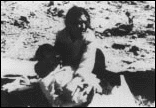|
|
 |
監督:宮島義勇 Director : Miyajima Yoshio |
| 1945年8月15日、日本の敗戦は朝鮮半島にとって植民地からの解放であった。しかし米ソの冷戦 構造から朝鮮半島は38度線を境に南北に分断された。1950年、朝鮮戦争勃発。米軍による激しい攻撃で多くの朝鮮人が命を落とした。そして停戦後、南北に分断された朝鮮半島は二つの国家となり 1979年には南側に「壁」が築かれる。この作品は平和と統一のために闘う朝鮮人民に送るエールとして宮島義勇が取り組んだものである。古いフィル ムやニュース映像を交えながら第二次大戦後の朝鮮の歴史を描いた後、89年に文益煥牧師が平壌を訪問し大歓迎された様子や、女子大生の林秀卿さ んが第13回世界青年学生平和祭典に出席したあと板門店を北から南へ通過、90年「祖国統一のための汎民族大会」が白頭山から漢拏山目指して朝 鮮半島を縦断しようとしたが板門店で挫折…。困難に直面しながら祖国統一を願う人々の姿をカメラは丹念に追う。高名な撮影監督の宮島義勇は『チョンリマ』『怒りをうたえ』『俺たちは鉄路に生きる』などドキュメンタリー作家としても知られるが、この作 品ではナレーションは一切使用せず、高鳴る音楽と字幕を多用し映像表現のみで観客に語りかける。この映画は90年に約1年をかけて撮影された が公開ならず、完成より3年後ようやく日本撮影監督協会の手で上映された。 | The Korean peninsula was liberated with the defeat of Japan on August 15th 1945. However, the peninsula was divided by a border at the 38th parallel into southern and northern parts according to the structure of the Cold War between the USA and the USSR. The Korean War began in 1950. Many Koreans lost their lives because of the US army's ferocious attacks. Then, after the cease-fire, the peninsula became two nations, divided into South and North. In 1979, a " wall " was built by the South. Miyajima took on the making of this film as a means of sending a rallying cry to the people in Korea who are struggling for peace and unification. After portraying the postwar history of Korea by mixing together images from old film and newsreels, he shows the visit of Father Mun Ik-hwan to Pyongyang in 1989 and the grand welcome he received there. We also see the female university student Im Su-gyeong crossing Panmunjon from North to South after participating in the 13th World Youth and Student Peace Festival, and the later attempt of the 1990 " Panracial Conference for Unification of the Fatherland " to go the length of Korea, from Mt. Pekdu (in the very North) to Mt. Halla (in the very south), stopped from going any further than Panmunjon. The camera painstakingly details the lives of these people who confront problems head-on as they work earnestly for the reunification of their fatherland. Miyajima is famous as a cinematographer and is also known for documentary works such as Chun Ri Ma ( " Chonrima " ), Song of Anger ( " Ikari o utae " ), and We Live in the Railroad ( " Oretachi wa tetsuro ni ikiru " ). This film is different in that it has no narration whatsoever, speaking to the audience solely through throbbing music, frequent subtitles, and visual expression. It took almost the whole of 1990 to film, but was never exhibited until it was finally shown by the Japanese Cinematographers Association some three years after it was completed. |